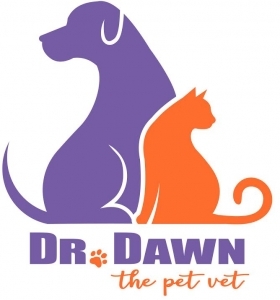I am talking about #leptospirosis, because, in many parts of the country, we are seeing much higher numbers of cases. Particularly here in the Northeast where I practice, the weather patterns have presented the perfect conditions for it to thrive, and subsequently infect our pets. It is also important because it is a zoonotic disease, meaning you can contract the disease from your pets. And it can be serious or even deadly. It used to be a disease we talked about affecting dogs that hunt, but now it is in our own backyards. Here’s how to prevent it affecting you:
First, what is it?
Leptospira organisms are spiral-shaped microscopic bacteria called spirochetes. While there are 250 serovars, or varieties, at least 10 are important for pets. The vaccines available, however, protect against 4. Different serovars produce different types of disease and are specific to geographical areas. Your vet should have a vaccine addressing those serovars.

Transmission:
Leptospirosis (Lepto for short) can be transmitted through direct contact with# infected tissue or secretions, such as blood or urine. Also, it can infect indirectly, through contact with contaminated water, soil or food. Urine-contaminated standing or drying water is the most common route of exposure. It can survive for months in cool moist earth, which does not freeze or get exposed to direct sunlight. Once in the soil, it washes into bodies of water, and puddles. Wildlife, such as rats and raccoons are typical sources.
Dogs may become infected when abraded (irritated or cut) skin comes into contact with infected urine or contaminated water. Bite wounds, reproductive secretions, or even eating dead infected tissue can#transmit the disease.
The organisms spread through the bloodstream, resulting in fever, joint pain, and general lethargy. It can then wreak havoc by affecting multiple organs, most commonly the kidneys. Unvaccinated, immunocompromised, and older or younger dogs are more likely to become ill when infected. But there are many “asymptomatic” carriers that can spread the disease to those at risk without knowing. Contact with such a dog may potentially spread the disease to other dogs or humans. The Centers for Disease Control and Prevention monitor leptospirosis cases in people. It seems that one third come from contact with infected dogs, and one third come from contact with rats (usually through field work exposing them to rats). Recreational activities involving water and exposure to flood waters are also associated with human #outbreaks, and the symptoms are the same in people as dogs.

Why now?
Recently, it has been determined that the protection from the vaccines doesn’t last as long as a year. It explains why many dogs already vaccinated are becoming sick. Some may shed the disease without signs, due to some protection. It complicates the diagnosis and ultimately treatment, because previously, a vaccinated dog that was sick, showing vague symptoms might not make you think leptospirosis. The disease mimics other disease symptoms, such as kidney or liver disease, caused by Lyme for example. The lepto vaccine was not part of the “Core” vaccines that are recommended for all dogs. Now, that thinking is changing, making it core. Therefore, for endemic areas, specialists are recommending the vaccine be administered every 6 months. I am recommending that frequency to my patients.
What are typical symptoms?
Lepto can be an acutely severe illness, but most dogs can survive their acute phase and are not diagnosed until they have a more chronic stage. Most commonly dogs present with kidney failure symptoms, such as excessive water consumption, a week or two after a fever. They may be depressed, stop eating, limp, or vomit.
Younger animals tend to be more severely affected. It used to be that large breed dogs in rural or suburban areas, July through December, but now, any breed or size of dog can be afflicted. Recovered animals can shed organisms for months after.
How to test for it:
Lepto can be difficult to detect. There are various #tests that can be used, based on whether or not your dog has been vaccinated. Your veterinarian may need blood and urine. Some patients test negative early in the disease, complicating the diagnosis, and a convalescent #titer (taken during or after treatment) is sometimes indicated.
Treatment:
Fortunately , there are antibiotics that can treat lepto. It is important to also prevent shedding, and handle your pet carefully while undergoing treatment, to prevent infection of yourself or your family. Some dogs will need hospitalization and aggressive treatment. If your doctor is suspicious of the disease, they will explain the precautions you need to take to protect your pet and your family.
Dr. Dawn
Please subscribe to this blog here and share.




